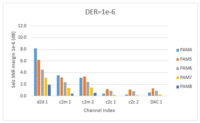Cathy Liu
Cathy Ye Liu, distinguished Engineer and director, currently heads up Broadcom SerDes architecture and modeling group. Previously she worked as R&D director and distinguished engineer in Avago/LSI which acquired Broadcom in 2016. Since 2002, she has been working on high speed transceiver solutions. Previously she has developed read channel and mobile digital TV receiver solutions. Her technical interests are signal processing, FEC, and modeling in high-speed optical and electrical transceiver solutions. She has published many journal and conference papers and holds 20+ US patents. Cathy has demonstrated her leadership roles in industry standard bodies and forums. Currently she serves as a member of the board director of Optical Internetworking Forum (OIF), a member of the board of advisors for the department of Electrical & Computer Engineering (ECE) of University of California at Davis and the co-chair of the DesignCon technical track of high speed signal processing, equalization and coding. She received her B.S. degree in Electronic Engineering from Tsinghua University, China, in 1995 and received her M.S. and Ph.D. degrees in Electrical Engineering from University of Hawaii in 1997 and 1999, respectively.
ARTICLES
DesignCon 2024 Best Paper Award Winner
Read More

-Analysis-Cover-9-3-24.jpg?height=200&t=1725385344&width=200)




